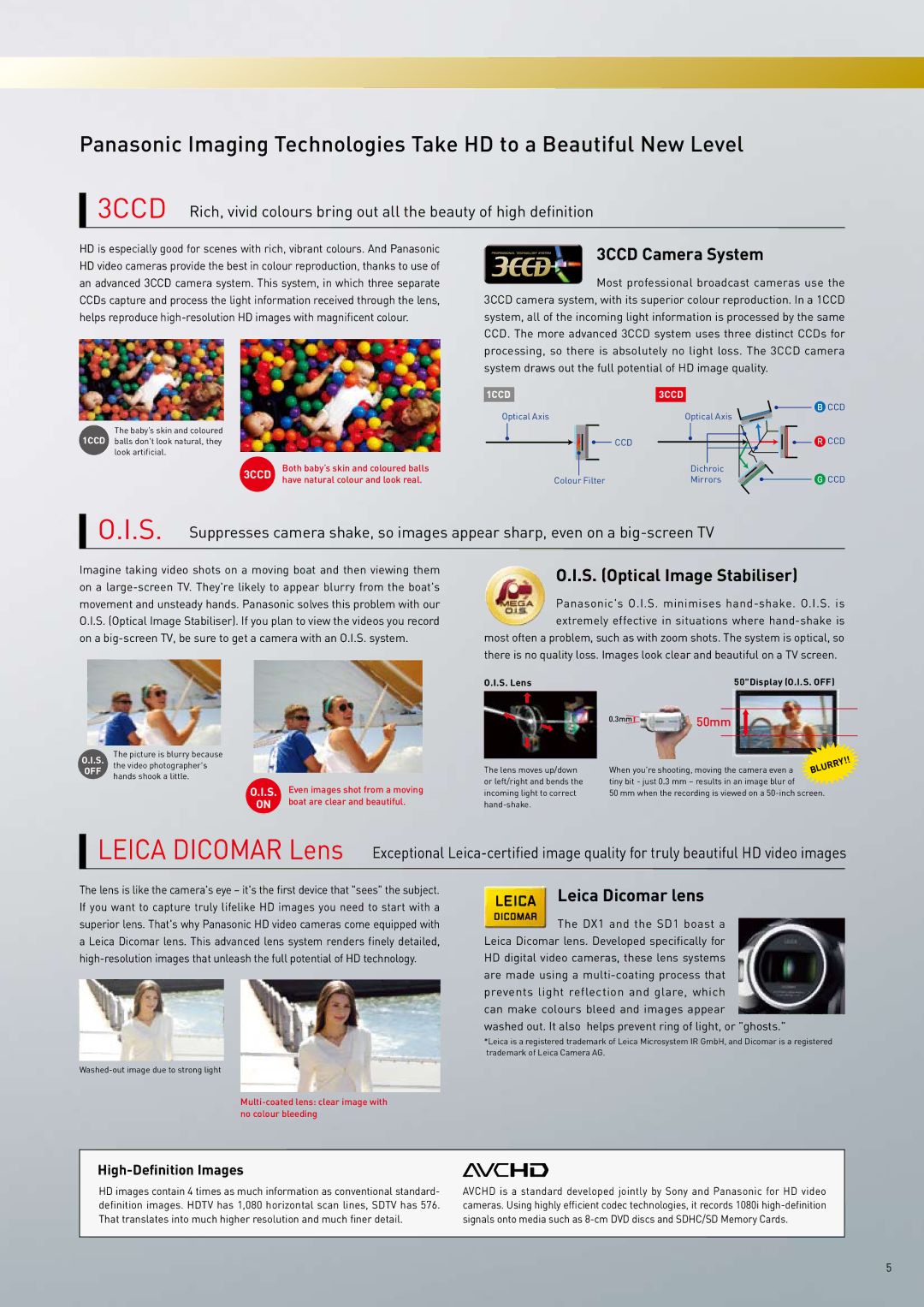
Panasonic Imaging Technologies Take HD to a Beautiful New Level
3CCD Rich, vivid colours bring out all the beauty of high definition
HD is especially good for scenes with rich, vibrant colours. And Panasonic HD video cameras provide the best in colour reproduction, thanks to use of an advanced 3CCD camera system. This system, in which three separate CCDs capture and process the light information received through the lens, helps reproduce
3CCD Camera System
![]()
![]()
![]()
![]()
![]()
![]()
![]() Most professional broadcast cameras use the 3CCD camera system, with its superior colour reproduction. In a 1CCD system, all of the incoming light information is processed by the same CCD. The more advanced 3CCD system uses three distinct CCDs for processing, so there is absolutely no light loss. The 3CCD camera system draws out the full potential of HD image quality.
Most professional broadcast cameras use the 3CCD camera system, with its superior colour reproduction. In a 1CCD system, all of the incoming light information is processed by the same CCD. The more advanced 3CCD system uses three distinct CCDs for processing, so there is absolutely no light loss. The 3CCD camera system draws out the full potential of HD image quality.
The baby’s skin and coloured 1CCD balls don't look natural, they
look artificial.
3CCD
Both baby’s skin and coloured balls have natural colour and look real.
1CCD | 3CCD |
Optical Axis | Optical Axis |
| CCD |
| Dichroic |
Colour Filter | Mirrors |
BCCD
RCCD
GCCD
O.I.S. Suppresses camera shake, so images appear sharp, even on a
Imagine taking video shots on a moving boat and then viewing them on a
O.I.S. (Optical Image Stabiliser)
Panasonic's O.I.S. minimises
there is no quality loss. Images look clear and beautiful on a TV screen.
O.I.S. The picture is blurry because OFF the video photographer's
hands shook a little.
O.I.S. | Even images shot from a moving |
ON | boat are clear and beautiful. |
O.I.S. Lens
The lens moves up/down or left/right and bends the incoming light to correct
50"Display (O.I.S. OFF)
0.3mm![]() 50mm
50mm
When you're shooting, moving the camera even a tiny bit - just 0.3 mm – results in an image blur of
50 mm when the recording is viewed on a
LEICA DICOMAR Lens Exceptional
The lens is like the camera's eye – it's the first device that "sees" the subject. If you want to capture truly lifelike HD images you need to start with a superior lens. That's why Panasonic HD video cameras come equipped with a Leica Dicomar lens. This advanced lens system renders finely detailed,
Washed-out image due to strong light
 Leica Dicomar lens
Leica Dicomar lens
The DX1 and the SD1 boast a Leica Dicomar lens. Developed specifically for HD digital video cameras, these lens systems are made using a
washed out. It also helps prevent ring of light, or "ghosts."
*Leica is a registered trademark of Leica Microsystem IR GmbH, and Dicomar is a registered trademark of Leica Camera AG.
High-Definition Images
HD images contain 4 times as much information as conventional standard- definition images. HDTV has 1,080 horizontal scan lines, SDTV has 576. That translates into much higher resolution and much finer detail.
AVCHD is a standard developed jointly by Sony and Panasonic for HD video cameras. Using highly efficient codec technologies, it records 1080i
5
